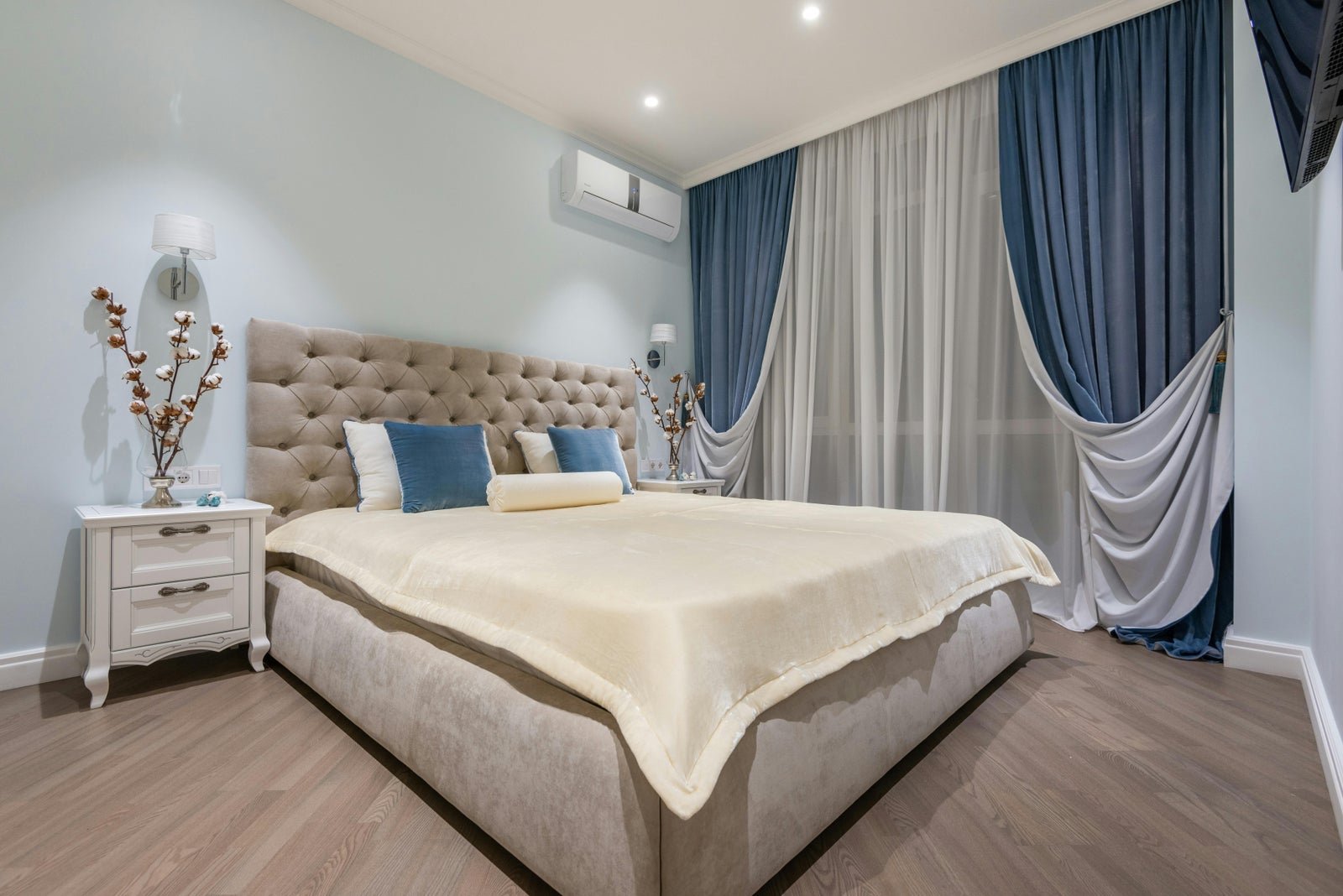
You may have heard that certain colours can subconsciously evoke certain emotions. For example, it’s said red and yellow can make you hungry. (Is that why so many fast-food brands use reds and yellows in their logos?) So, how can you make these colour perceptions work for you in staging?
The Goal of Staging
When staging a home, the aim is to make it appeal to as wide of an audience as possible. Colours can be used to express individuality and uniqueness, but when you’re trying to sell a home, you want to refrain from going too wild with your colour choices. This is where basic colour theory and psychology can come in handy. You can use certain colours to create a warm and inviting atmosphere that will help potential buyers envision themselves in the space.
Basic Colour Psychology

Blue: Blue is known to be a peaceful and calm colour. You may find it used in places where people want to evoke a sense of serenity, such as in bathrooms or bedrooms.
Red: Red is a very strong colour with many associated emotions. It can mean anger, but also boldness and strength. Because it’s such an intense colour, it’s best used as an accent so as not to overwhelm the viewer.
Yellow: Yellow is another colour that’s best used in small doses. When used correctly, yellow can evoke a sense of warmth and happiness, but too much yellow can easily become distracting.

Green: Green is the colour of nature. Many associate greens with being balanced and symbolizing growth and prosperity. The great thing about green is you can utilize natural sources of green—such as from greenery in your backyard or plants inside—as a way to bring these emotions into your staging.
Brown: Like green, brown can symbolize nature and ruggedness. Browns are a great way to bring in earthy tones to your rooms and can be used in furniture, cabinetry, walls, and more.
Grey: Greys are incredibly versatile due to their neutral nature. Grey colours lack energy and emotion, making them a great option for a blank slate. You can pair them with more exciting colours to create points of interest throughout a room.
White: Many think of white as being a pure and clean colour, but in staging it can also symbolize a blank slate. Off-white walls and furniture can be used to help the buyer imagine the home as a clear canvas on which they can paint their new lives.
Black: In large doses, black can seem daunting and overwhelming. But when used to accent certain features, black can appear sleek and modern. Blacks are often best used in appliances, furniture, and accent pieces.
How To Choose Colours
Part of the importance of staging and decorating is knowing your market. If your property is in an urban location with young buyers, your home could benefit from staging that emphasizes modern tones and bold accents. If your property is a more rustic one in a rural or cottage location, you can lean more eclectic with your decor and use earthy colours. When done correctly, the staging should highlight the best features and elements of the home.
Accent Colours

Accent colours are a great way to liven up a space. While you may choose a more neutral colour scheme for a room’s walls and floors, you can add pop of colour with an accent wall, furniture, pillows, decorations, etc. When choosing accent colours, avoid picking too many contrasting colours or multiple bold colours. Bold colours from one or two colour families is enough to keep the eye moving around the room without making things cluttered.
 Importance of Colour Placement
Importance of Colour Placement
We naturally associate certain colours with certain places in the home. For example, whites are often found in kitchens and bathrooms as they are associated with being clean and fresh. Blues can often be found in bedrooms, as they are thought to be calming and relaxing.
If you don’t want to completely redecorate and repaint before selling, focus on the key rooms: the living room, bathrooms, and kitchen.
The average staged home spends 73 percent less time on the market and could fetch you 25 per cent over the asking price, making staging an incredible tool in selling your home. Taking advantage of how we see different colours can help you create a more memorable viewing experience for potential buyers.
